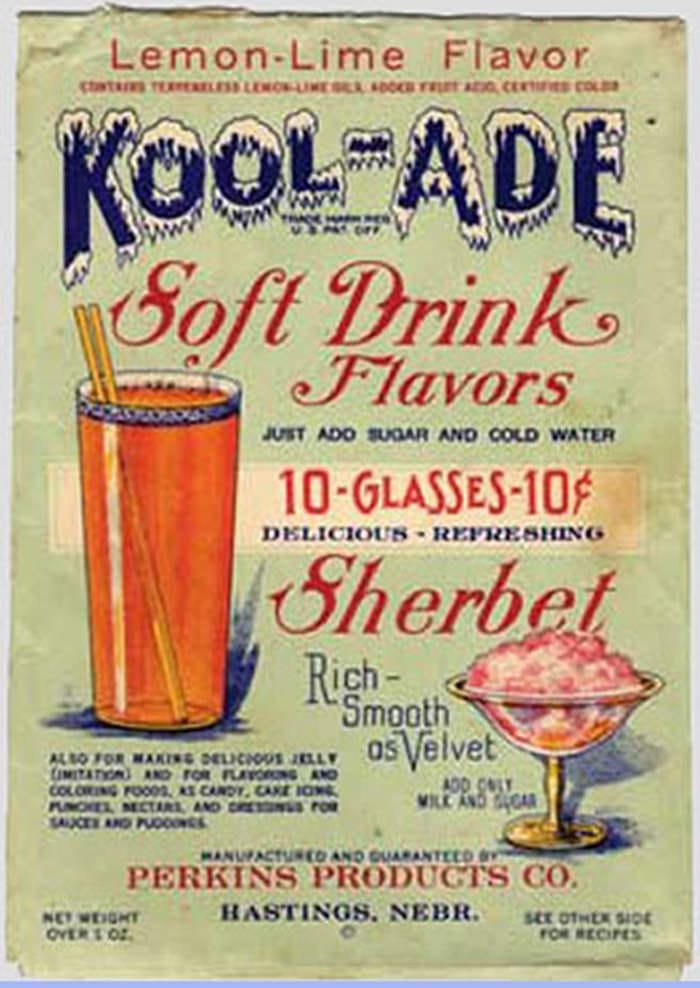Ancestors, Legends & Time
 Remember as a kid on a hot summer day drinking an ice cold glass of Kool Aid? I remember my Mom bought grape Kool Aid so there would be less arguing on what flavor we wanted. I guess because my flavors were limited, I offered a variety to my kids. But I have found that my grandkids tend to like Tropical Fruit Punch.
Remember as a kid on a hot summer day drinking an ice cold glass of Kool Aid? I remember my Mom bought grape Kool Aid so there would be less arguing on what flavor we wanted. I guess because my flavors were limited, I offered a variety to my kids. But I have found that my grandkids tend to like Tropical Fruit Punch.
Now we are heading into our fourth generation and the Great Grandkids seem to always wear a Kool Aid smile. Kool Aid has been around longer than the four generations, but my mom couldn’t afford even the nickel for a package of Kool Aid when she was a kid. Sometimes the flavor of Kool Aid can take you back to your childhood in an instant.
Here is a bit of trivia about our favorite childhood refreshment. Kool Aid got its start in Nebraska. It started out as a liquid concentrate called Fruit Smack, invented by Edwin Perkins.
Young Edwin was fascinated by chemistry and enjoyed experimenting with concoctions in his mother’s kitchen in Hendley, Neb. His father had a general store, and it was a dessert mix that entranced Edwin. It turn out, his childhood sweetheart, Kitty Shoemaker, introduced a popular powder dessert mix in six delicious flavors and called it Jell-O. Edwin convinced his father to carry the dessert in his store.
In 1918, Edwin married Kitty, and he developed a remedy to kick the tobacco habit, Nix-O-tine. By 1920, the demand for this and other products was so great that he and his family moved to Hastings, Neb., which had a better rail service for shipping.
Another one of Edwin’s products that was selling quickly was the original Fruit Smack. Like Jell-O, it came in six flavors. The concentrated 4 oz. bottle made enough for a family to enjoy at an affordable price. However, shipping the bottles proved to be costly and breakage was also a problem.
In 1927, Perkins developed a method of removing the liquid from Fruit Smack so the remaining powder could be repackaged in envelopes (which Perkins designed and printed under a new name called Kool-Ade. (He later changed the spelling to Kool Aid.)There was the outer package, which protected the inner packet of Kool-Aid. The product, which sold for 10 cents a packet, was first sold to wholesale grocery, candy and other suitable markets by mail order in six flavors; strawberry, cherry, lemon lime, grape, orange and raspberry. By 1929, Kool-Aid was distributed nationwide to grocery stores by food brokers. It was a family project for the Perkins to package and ship the mix around the country.
By 1931, the demand for Kool-Aid was so strong, Edwin needed to drop other items to concentrate on Kool-Aid. Expanding production required moving the business to Chicago. During the Great Depression, Perkins cut the price in half to just 5 cents a packet, which was a “luxury” most families could afford. Young entrepreneurs sprung up across the country setting up Kool-Aid stands. Most of the product was consumed by the children. It was a fun time and fun memory for the youngsters.
We set our Kool-Aid stand up in our yard across from the shirt factory and the ladies were our special customers.
Edwin introduced off-shoots of Kool-Aid, including pie fillings and ice cream mixes. During World War II, fruit acid and dextrose rationing prevented any expansion. After the war, the demand for Kool-Aid was so great that Perkins had to expand the factory and by 1950, some 300 production workers produced nearly one million packets of Kool-Aid each day.
In 1953, Perkins announced to his employees that he was selling Kool-Aid to General Foods. Within a year, the popular smiling face pitcher was introduced in print advertisements. Root Beer and Lemonade flavors were added to the original six flavors in 1955, and pre-sweetened Kool-Aid was developed in 1970. Kraft bought out General Foods. They refined the Kool-Aid pitcher into Kool-Aid Man. Kool-Aid is still popular after a hundred years.
Great childhood memories and do you remember the Kool-Aid jingle? Kool-Aid, Kool-Aid taste great. Kool-Aid, Kool-Aid can’t wait! Here’s a collection of commercials, even one with the Monkees.
The accompanying image and others are on Pinterest.

A lot of us appreciate the Bradbury Bishop Fountain, but Jeanne actually worked behind the counter making sodas while she was in high school. She knows everything about Webb City and is a member of the Webb City R-7 School Board.